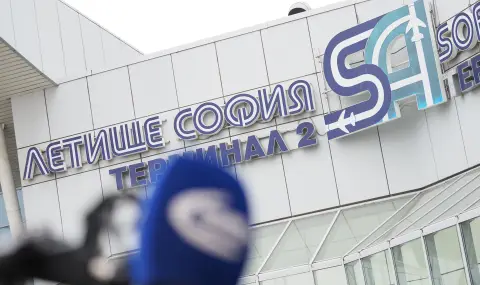Transport Minister Grozdan Karadjov admits that the flight of the drone that entered Sofia Airport could be a provocation. The unmanned machine twice got in the way of landing planes, BNT reported.
The drone was significantly larger than the video drones we know. It twice got in the way of landing planes and there is data that may lead to the conclusion that this was intentional. Such machines can be remotely controlled from a distance of up to 40 kilometers and can have dual use. At a meeting of the Deputy Prime Minister and Minister of Transport with the Air Force, the security services of the Ministry of Interior and the National Agency for National Security, Sofia Airport and the Civil Aviation Administration, both measures to increase airport security and legal changes were identified.
The drone that entered the airport area on Friday evening looks like a small plane. Its wingspan is one and a half meters. The machine weighs about 30 kilograms and in a collision with an aircraft can cause fatal consequences.
"Such drones are not usually found, they are specially made and unfortunately such drones can also have a dual use. Secondly, the skills to operate such a drone, a "small plane" type means someone with special training and with such capabilities", said Grozdan Karadjov, Deputy Prime Minister and Minister of Transport and Communications.
The radars of the Air Traffic Control have intercepted the drone and tracked its trajectory. It approached the western side of the runway and stood right on the landing strip for approaching aircraft. After the airliners were redirected to land on the eastern side of the runway, the drone moved and began circling this part of the strip.
"All this leads us to the conclusion, and here we want to be as open as possible to the public, that this is a provocation or someone is trying to test the airport's security systems," Minister Karadjov added.
Detecting such flying objects, due to their small size, is difficult and for this reason it is necessary to build two systems.
"One that is at the airport and covers the perimeter of the airport itself, i.e. of the "iron dome" type, explained the Minister of Transport.
This system should enable the neutralization of unmanned vehicles that approach the airport at a critical distance. The construction of this system is a commitment of the airport operators. The state will be responsible for building the second security system.
"This is the ability to detect all drones within a radius of about 20 km around the airport, and this will be a function of the state", summarized Karadjov.
In this perimeter, drones will have to be detected and tracked, so that in case of suspicion of malicious approach to the airport, it can be neutralized before it reaches the landing and takeoff approaches at a dangerous distance.
"And secondly, which is even more important, to catch the one who controls it, who could be at any other point", emphasized the Minister of Transport.
Grozdan Karadjov also outlined the need for legal changes that would allow security services to shoot down drones, as well as the collected electronic evidence to be used in criminal proceedings.
